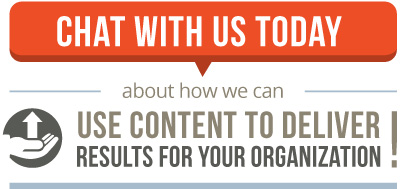Measuring content marketing results can be tricky.
Every client and business is different, and their goals are wide-ranging (from increasing brand awareness to converting traffic).
Fractl Creative Strategist Tom Dehnel sat down with SVP Dan Tynski to chat about how we gauge content marketing results.
Keep reading for our insider’s perspective of how a content marketing agency achieves results and manages growth.
Q&A: Content Marketing Results
Q: How do we show our clients the value of the content marketing campaigns we produce here at Fractl?
A: I think our services page explains what we do pretty well, but the actual value is going to vary from client to client. Many of our clients are link-focused, meaning they actually assign value or have a notion of how much certain volumes and types of inbound links from higher-authority publishers are worth to them.
Other clients may look at features, mentions, or links in leading industry/niche/vertical publications as a measure of success – and they’ve quantified the value because they’ve employed other methods of PR which are typically more expensive and less productive than what we do.
And finally, in longer-term contracts, our clients are able to directly measure the impact our work has on organic traffic (unpaid search traffic). They understand that earning relevant, high-trust links is an important signal to Google’s ranking algorithm, and the more of these a site earns, the more its domain authority (a measure of its trust and authority) rises. This typically corresponds with high rankings and traffic, all other things being equal.
Q: It’s always good when clients have a pretty solid understanding of the benefit of content on their organic search results. But even then, there must be a lot of marketing folks who struggle to place a specific dollar value on results, right?
A: Well, most people we meet who turn into clients already have an idea both of the challenges and costs for creating and promoting content if they were to do it themselves internally, so that generally makes it easier to pitch Fractl’s value. And, of course, we love it when clients have a firm grasp on how much each link of various types is worth to them.
I’d say those are the primary ways the work is quantified and ROI is looked at by about 80% of our clients, but others see just as much value in more traditional awareness marketing – from which ROI is and always has been tough to measure but certainly valuable.
And then in the longer term, sustained SEO/organic growth is part of the long-term ROI item that our largest and most involved clients look at.
Q: True, nowadays most clients know they need to allocate their dollars across a portfolio of online marketing programs. So do you find yourself needing to help clients decide how big of an investment to make in content?
A: Increasingly, marketing teams have a “content budget,” which can be either separate or part of the SEO team’s budget or the larger marketing team’s budget. We find that to be especially true of any enterprise-level client; they will no doubt have a large SEO budget and an increasingly large content budget.
Q: Got it, and that seems like a trend I’m sure over time makes our sales/marketing folks’ jobs a lot easier. So how does that affect the growth plan of a company like ours over the next quarter?
A: Well, it has always been important for us to hedge our largest contracts with a wider array of overall clients (that meet our minimums).
Everyone knows it’s unhealthy and dangerous to have one client make up a large percentage of overall monthly revenue, so we hedge that with additional clients… but additional clients (in some circumstances), increase the workload because of associated management costs.
So the goal is to find the right happy medium, which is an ongoing process.
Q: So what do we typically look for when it comes to minimum engagement pricing?
A: Typically we aim to work with clients who are spending about $12K/month, which is essentially one full-scope campaign, and we will look to start with a six-month introductory program. Sometimes we will relax this to three months, but we don’t like to do that because we know our work takes time to build results. There’s no such thing as a quick-fix when it comes to content!
Q: Where do our clients come from now, and how does that break down? I.e., if we are talking about inbound leads, how many of them are from the website, from referrals, content pieces about Fractl, etc.?
A: The vast majority of our leads are inbound leads, which come as a result of our marketing efforts over the past several years (thought leadership and content marketing for ourselves). About one-fifth of those are referrals from contacts of the partners or current/past clients.
The rest are from the website, people who have found us via search (a small portion), and from traffic coming from our many mentions around the web and in association with our value proposition. We’re not doing any traditional marketing at the moment, and that’s working well for us.
In the past, we’ve done some paid search stuff, some remarketing, lots of experiments – but we found our dollars were best spent doing for ourselves what we do for clients.
Q: Thanks, Dan!
A: My pleasure!



